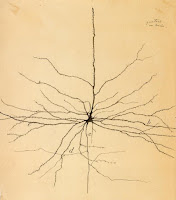This week’s topic of space and art
was a great way to sum up all the topics within this class. The studies of our
universe and the attempts to explore it have in some way incorporated all the
other topics we have covered. As said by professor Vesna, “we are using
nanotechnology in space and biotechnology and mathematics and robots and this
is where it all comes together”.
 |
Scientists have discovered many ways to
explore the universe and it has very much so influenced the art world. For example,
The Dancing on the Ceiling: Art and Zero Gravity exhibition is a broad
exploration of two primary themes of transcendence and zero gravity. This exhibition
also goes on to explore the fact that people have attempted to defy gravity,
but can never completely escape.
 |
I personally am not a fan of math,
but the Powers of Ten video was very interesting to me. Seeing how the video
could be zoomed out to beyond where you could imagine while keeping the same
central focus point was pretty amazing. It’s very interesting to think that one
math equation can be used in such a unique and effective way.
 |
Sources:
(Lectures by Professor Vesna)
"Dancing on the
Ceiling: Art & Zero Gravity Curated by Kathleen Forde : EMPAC Curtis R.
Priem Experimental Media and Performing Arts Center : Troy, NY USA." Dancing on the Ceiling: Art & Zero Gravity Curated by
Kathleen Forde : EMPAC Curtis R. Priem Experimental Media and Performing Arts
Center : Troy, NY USA. N.p.,
n.d. Web. 30 May 2016.
"POWERS OF TEN AND
THE RELATIVE SIZE OF THINGS IN THE UNIVERSE | Eames Office." Eames Office. N.p.,
09 Oct. 2013. Web. 30 May 2016.
History.com Staff.
"The Space Race." History.com. A&E Television Networks, 01 Jan. 2010. Web.
30 May 2016.
"Dancing on the
Ceiling." Experimental Media and
Performing Arts Center (EMPAC). N.p.,
23 Jan. 2013. Web. 30 May 2016.













